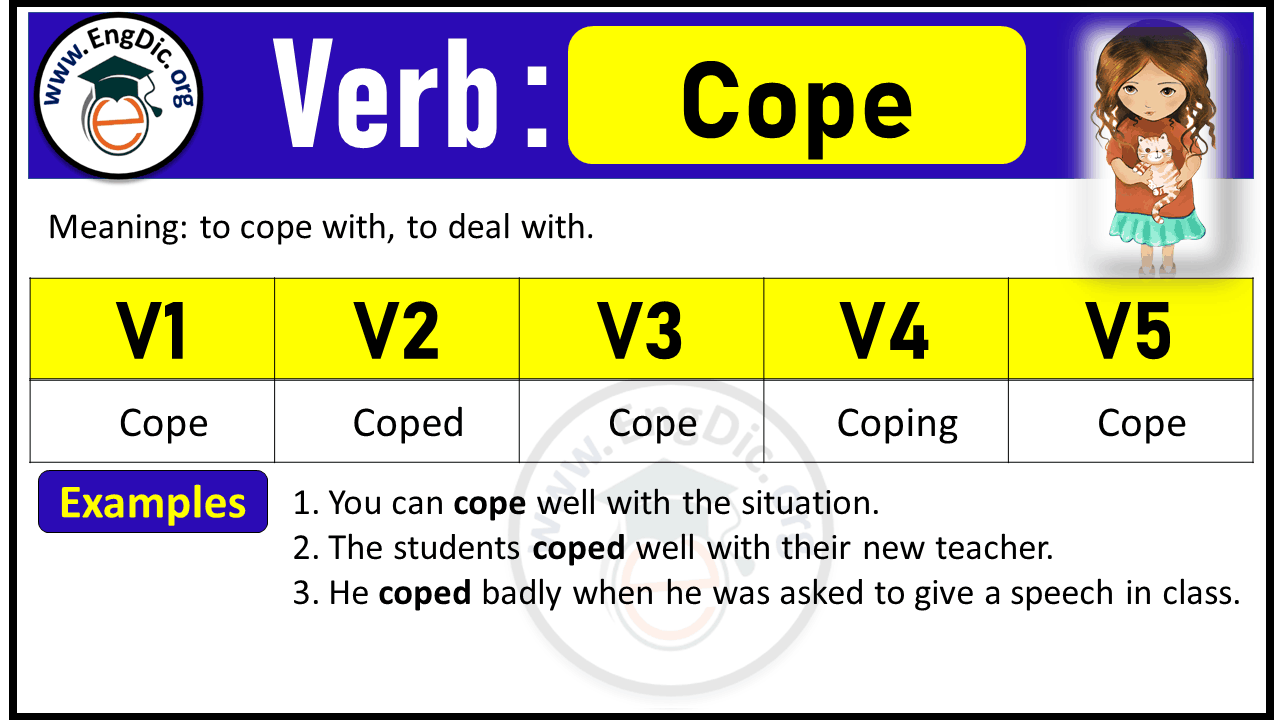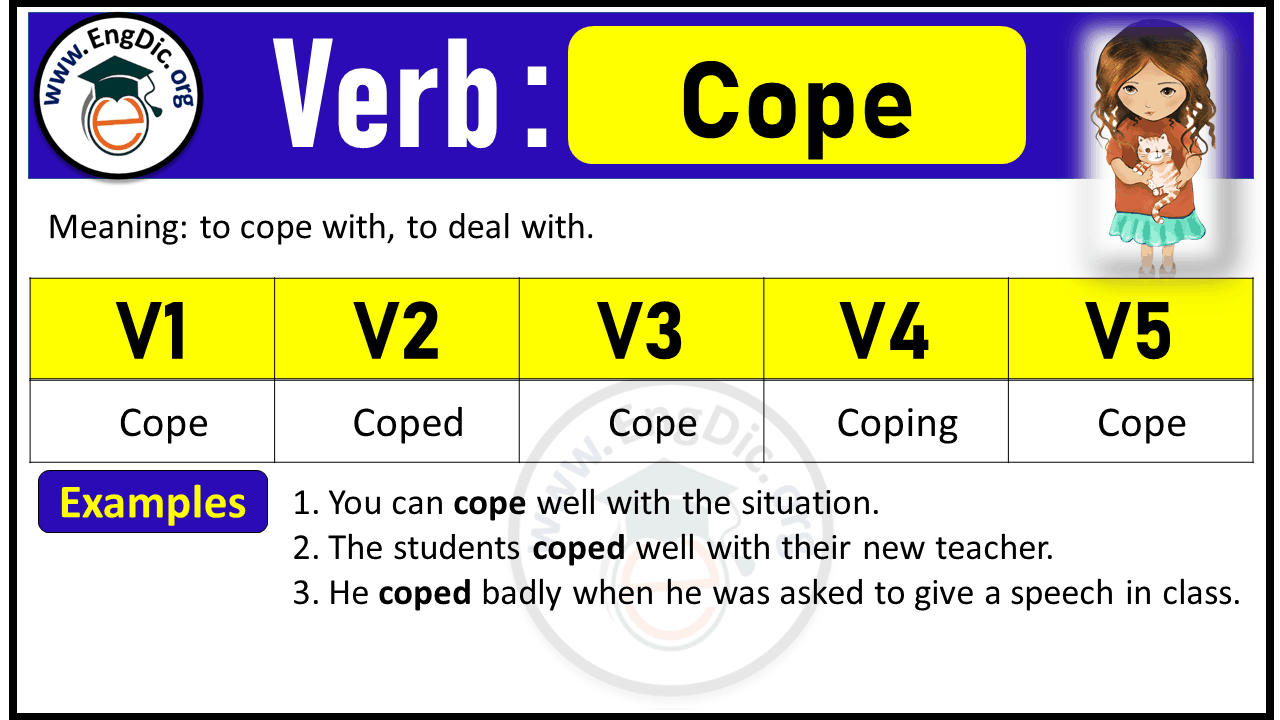Cope Past And Past Participle Form V1 V2 V3 V4 V5 Form of Cope
Have you ever found yourself puzzled by the different forms of a verb when trying to write or speak in English? If you have, you’re not alone.
Understanding the various verb forms is a common challenge, especially when you’re aiming for fluency. Today, we’re tackling the verb “cope” and diving into its past and past participle forms: V1, V2, V3, V4, and V5. Why does this matter to you?
Mastering these forms can significantly enhance your communication skills, making your expressions more precise and impactful. By the end of this post, you’ll have a clear understanding of how to use “cope” in all its forms, boosting your confidence in both writing and speaking. Let’s uncover the secrets of this verb together, and transform your language skills from uncertain to unstoppable. Ready to take your English to the next level? Let’s dive in!

Credit: englishstudyhere.com
Verb Forms Of Cope
The verb “cope” is simple to learn. It has five forms. First, the base form is cope. Next is the past simple, which is coped. The past participle is also coped. The present participle, or coping, is used in continuous tenses. Lastly, the third person singular form is copes. Using these forms correctly is important. It helps in speaking and writing. Practice makes it easier. Try using each form in a sentence. This will help you learn quickly. The more you practice, the better you become. Keep trying and don’t give up. Language learning is fun!
Past And Past Participle
The word copeis a verb. It means to handle a situation. In past tense, cope becomes coped. This shows something handled in the past. The past participle form is also coped. Use it with helping verbs like “has” or “had”. For example, “He has coped well”. This shows the action is complete.
| Form | Example |
|---|---|
| V1 | cope |
| V2 | coped |
| V3 | coped |
| V4 | coping |
| V5 | copes |
The form copingis used for actions happening now. Example: “He is coping well”. The form copesis for regular actions. Example: “She copes with stress daily”. It shows a routine.
Usage Examples
People often need to copewith hard situations. He copedwell with his exams. Many have copedwith stress during school. She is copingwith her new job. They will copewith the changes soon.
Dealing with stress can be tough. Learning to copehelps everyone. Copingskills are important for kids. Knowing how to copeis useful. Stay calm to copebetter.

Credit: engdic.org

Credit: engdic.org
Conclusion
Understanding the verb “cope” and its forms is essential. It helps in forming correct sentences. Knowing V1 to V5 forms aids in effective communication. Practice makes perfect. Use these forms in daily conversations. This improves English skills. Many learners struggle with verb forms.
Regular practice leads to improvement. Keep exploring new words and their forms. This builds vocabulary. Simple language is key for clarity. Always seek to understand and use new words. English gets easier with practice. Stay curious and keep learning. Your language skills will grow over time.






